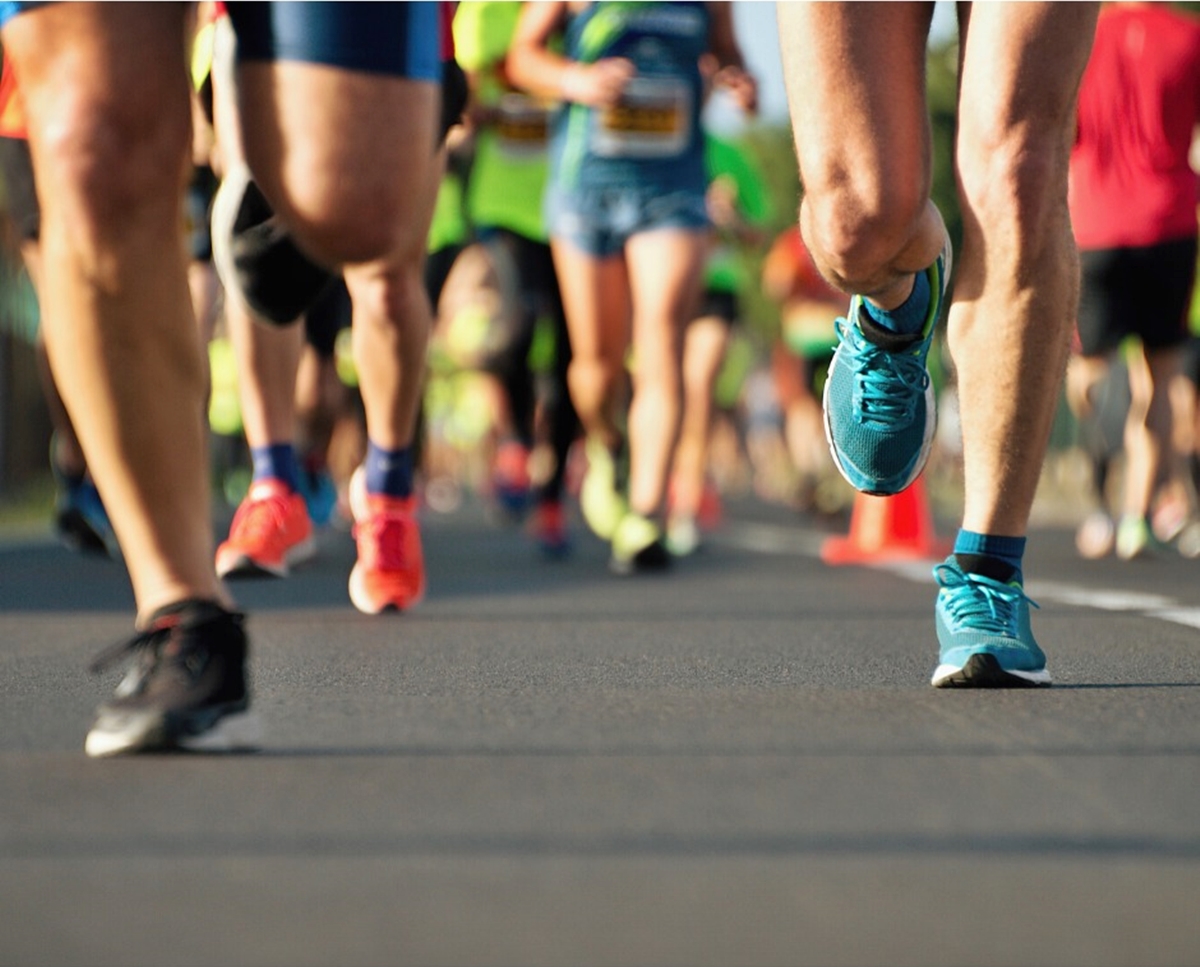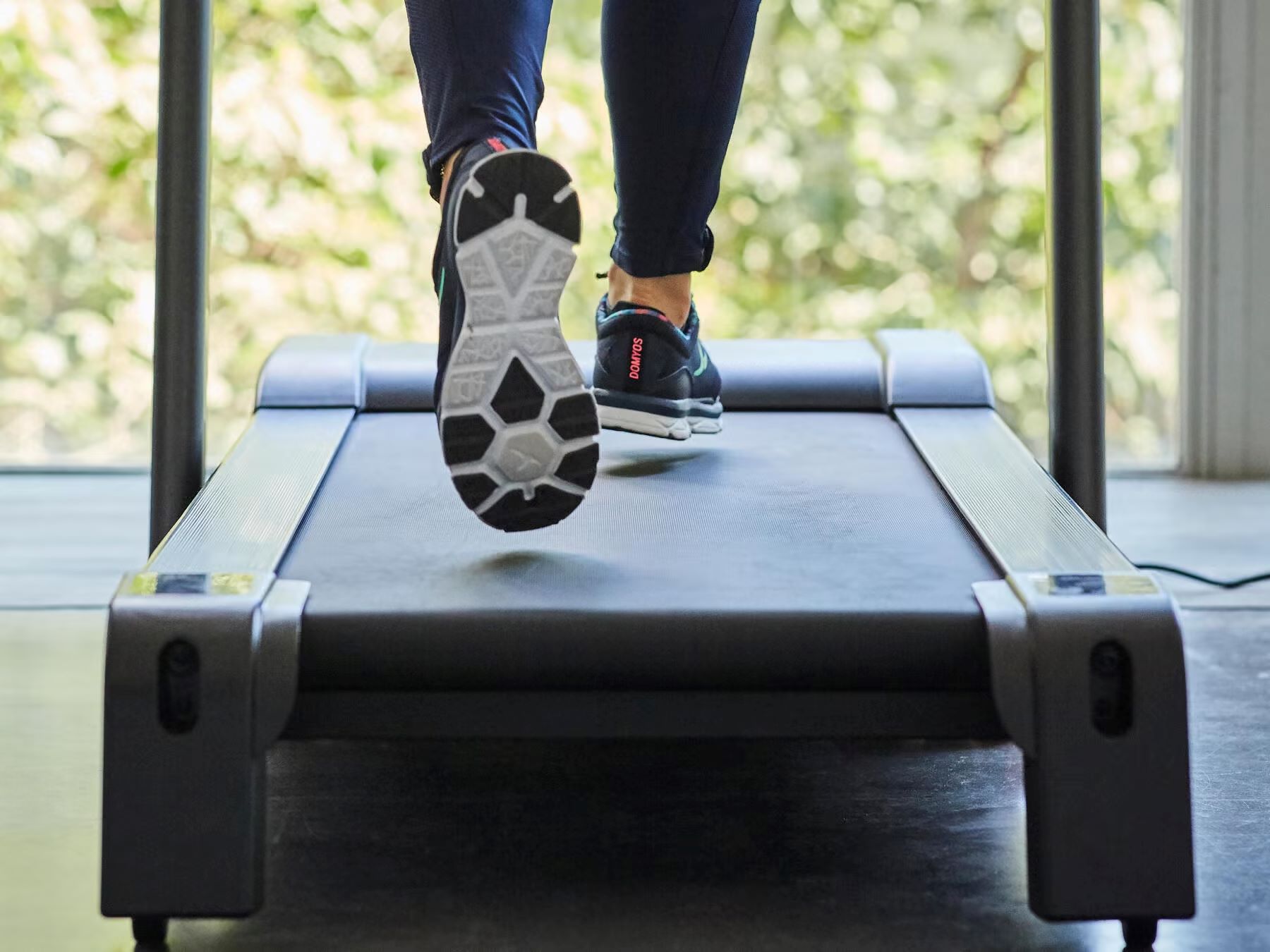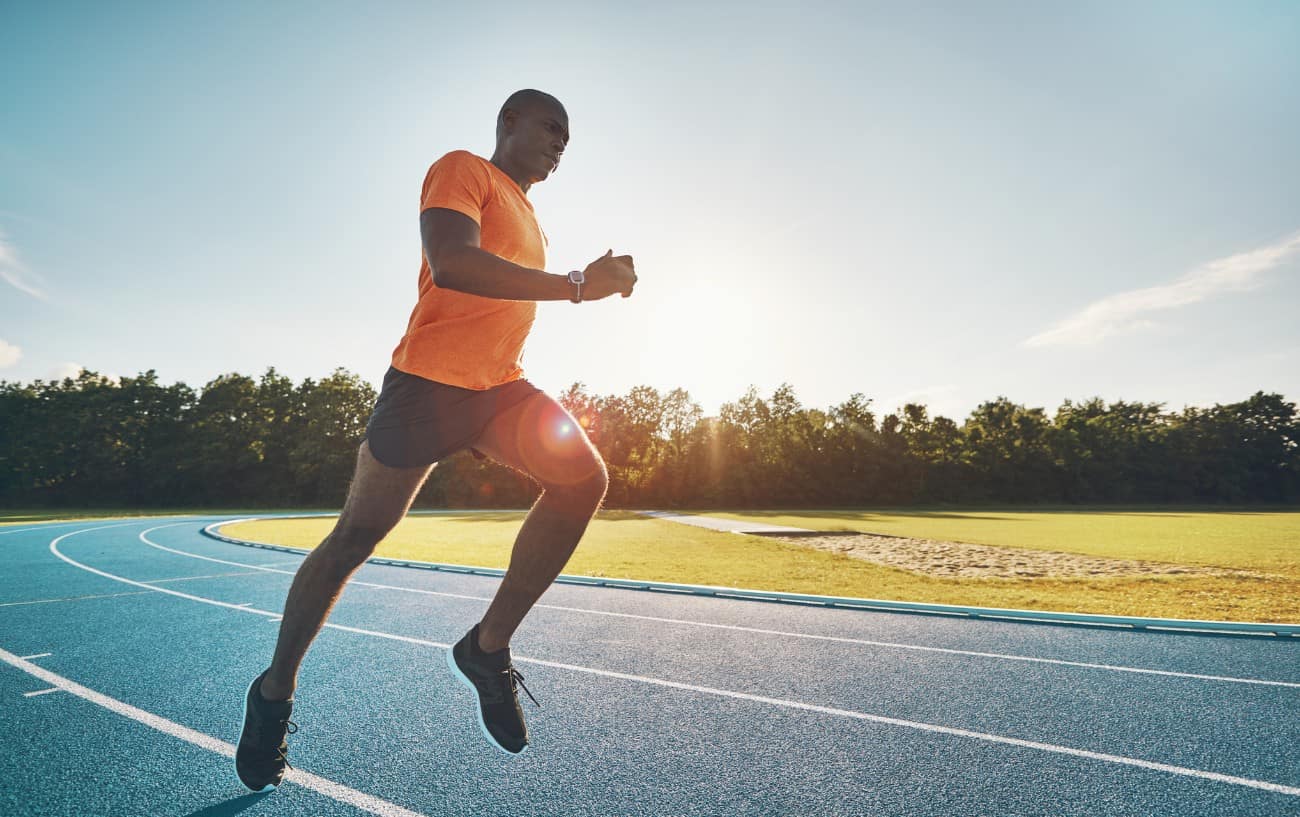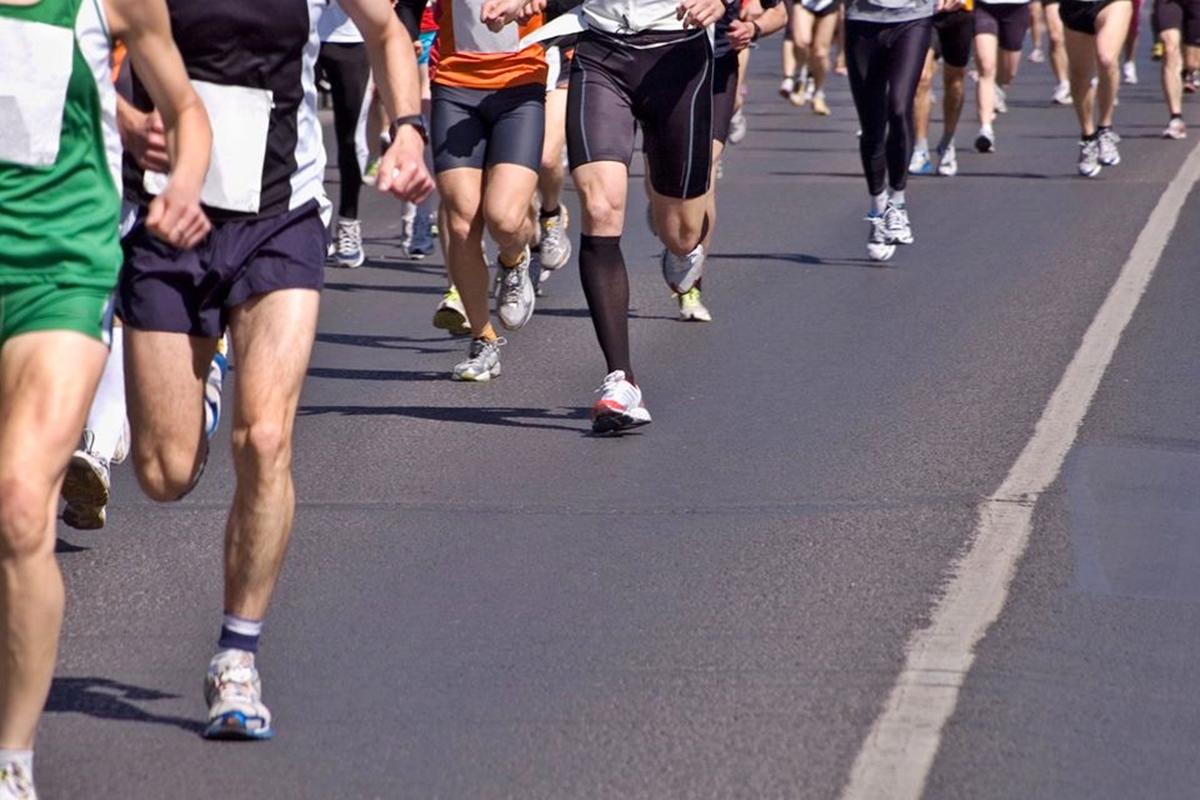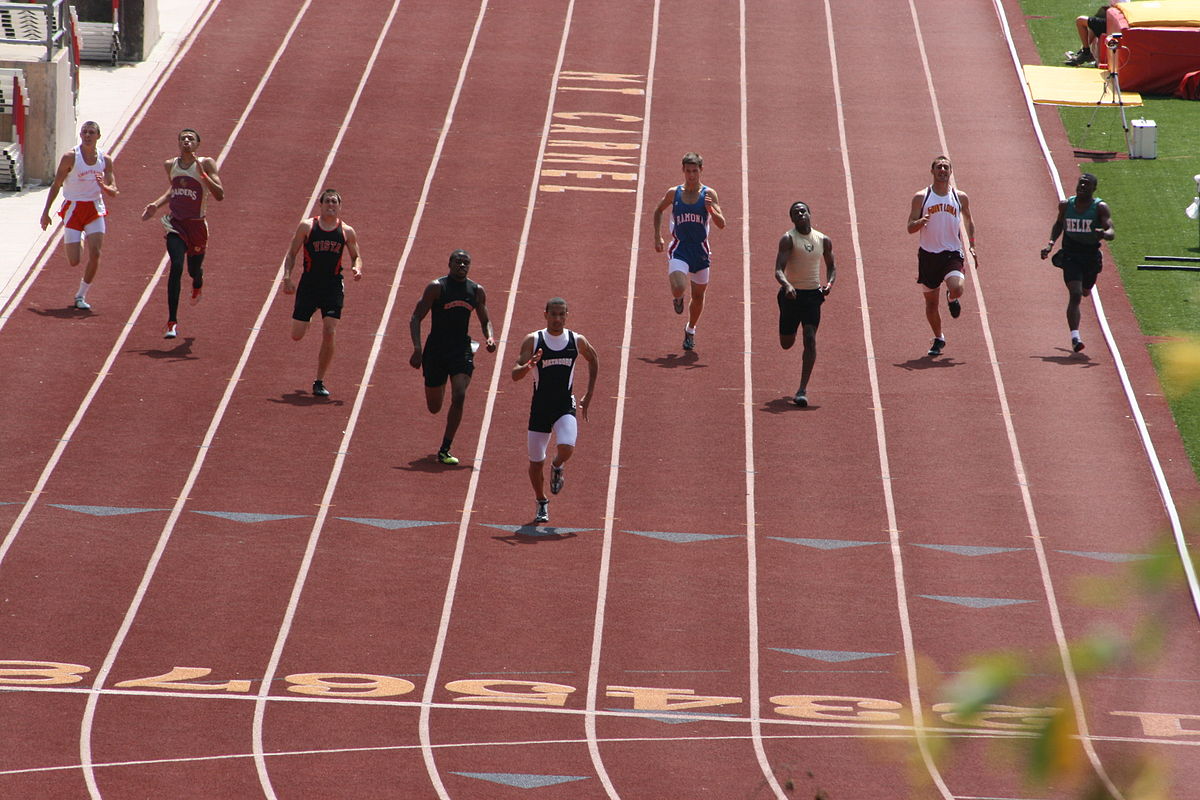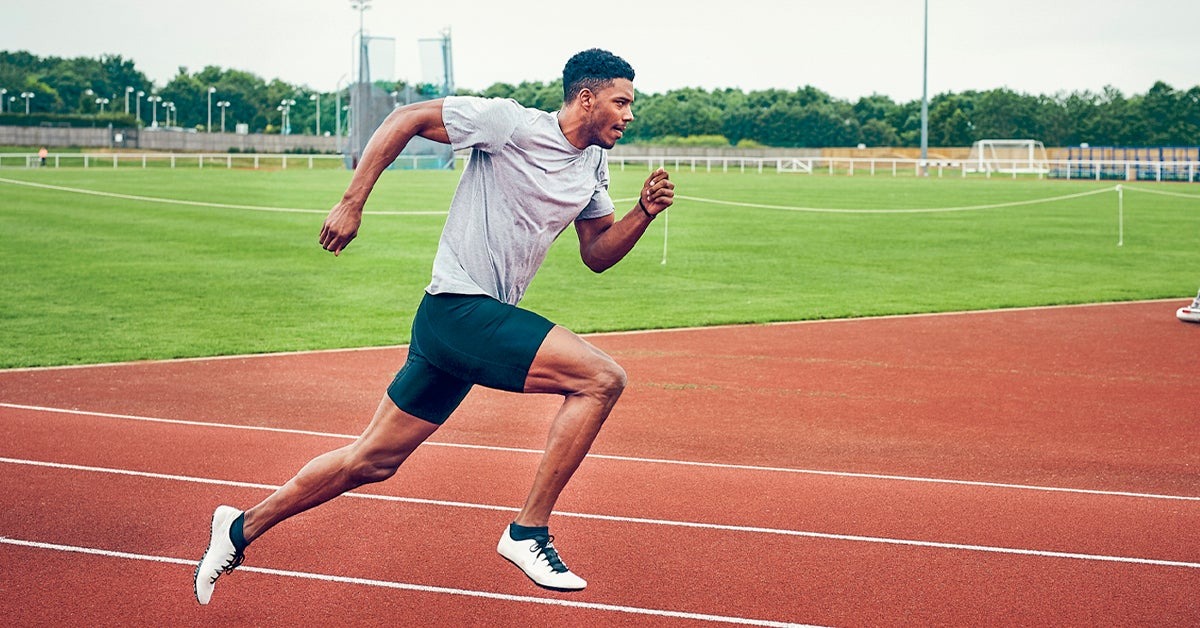

Featured
How To Know Your Pace When Running
Published: October 5, 2023
Introduction
Welcome to the world of running, where the exhilaration of pushing your limits and the freedom of exploring new paths await you. Whether you’re a seasoned marathoner or just starting out on your fitness journey, understanding your running pace is crucial for improvement and achieving your goals. Knowing your pace helps you track your progress, set realistic targets, and tailor your training strategy accordingly. In this article, we’ll explore the importance of knowing your pace, factors affecting it, methods to determine it, and tips for enhancing it.
Running pace is defined as the time it takes to cover a specific distance, usually measured in minutes per mile or kilometers. It reflects your overall speed and endurance during a run and forms the foundation for setting time goals in races or specific workouts. By familiarizing yourself with your pace, you can make informed decisions about when to push harder, when to cruise, and when to ease off. Understanding your pace allows you to train effectively and avoid burnout or injury.
Several factors influence your running pace, including your fitness level, running experience, terrain, weather conditions, and overall health. Additionally, the type of workout or race you’re undertaking also impacts your pace. For instance, your pace during a long, slow distance (LSD) run will be different from a speed workout or a race. Hence, it becomes essential to recognize these factors and adjust your pace accordingly.
Determining your running pace can be done through various methods. Modern technology has made it easier than ever to track your speed and distance using gadgets like GPS watches or smartphone apps. These tools provide real-time data on your pace, allowing you to make adjustments on the go. However, it’s crucial to remember that relying solely on technology may hinder your ability to listen to your body and develop a natural pace sense.
If you prefer a more traditional approach, you can calculate your pace manually using a stopwatch or a basic timer. This method requires you to measure a specific distance accurately, such as a track, and time yourself as you run. By dividing the distance by the time taken, you can determine your average pace. It may take a few attempts to get an accurate reading, but with practice, you’ll develop a keen sense of your running pace.
In the following sections, we will delve deeper into these methods and provide tips for improving your running pace. Additionally, we’ll help you understand how to adjust your pace for different distances and listen to your body to prevent overexertion or injuries. So, let’s lace up our shoes, hit the pavement, and discover the world of running pace!
Importance of Knowing Your Pace
Knowing your running pace is essential for several reasons. It enables you to set realistic goals, track your progress, and optimize your training. Here are a few key reasons why understanding your pace is crucial:
Goal Setting: Your running pace provides a benchmark for setting goals and striving for improvement. Whether you’re training for a specific race distance or aiming to increase your endurance, knowing your current pace helps you establish achievable targets. By setting realistic goals based on your pace, you can stay motivated and focused throughout your training journey.
Progress Tracking: Tracking your pace allows you to monitor your progress over time. By comparing your current pace to your previous performances, you can assess how much you’ve improved and identify areas where you need to focus more. Seeing your pace improve incrementally can provide a tremendous sense of accomplishment and keep you motivated to continue pushing yourself.
Training Optimization: Understanding your pace helps you tailor your training regimen to your specific needs. It allows you to determine the appropriate intensity and volume of your workouts. For instance, if your goal is to increase your speed, incorporating interval or tempo runs at a faster pace may be beneficial. On the other hand, if you’re training for a long-distance race, incorporating slower, long-distance runs into your routine can build endurance.
Pacing Strategies: Knowing your pace is crucial during races or time trials. It enables you to assess your performance and make strategic decisions during the race. By starting at the right pace and maintaining it throughout, you can avoid starting too fast and burning out or starting too slow and not reaching your potential.
Injury Prevention: Understanding your pace can help prevent overexertion and injuries. Pushing yourself too hard can lead to burnout or cause strain on your muscles and joints. By knowing your pace, you can stay within your limits and avoid pushing beyond what your body can handle.
By recognizing the importance of knowing your running pace, you can optimize your training, push your limits, and achieve your goals effectively. In the next section, we’ll discuss the various factors that can affect your running pace, allowing you to gain a deeper understanding of how different variables impact your performance.
Factors Affecting Your Running Pace
Your running pace can be influenced by various factors that impact your performance. Understanding these factors is essential for effectively managing and adjusting your pace. Here are some key factors that can affect your running pace:
Fitness Level: Your overall fitness level plays a significant role in determining your running pace. The more you train and build your cardiovascular endurance and muscle strength, the faster you’ll be able to run. As your fitness level improves, you may find that your pace naturally increases.
Experience and Training: Experience and training also influence your running pace. Beginners may have a slower pace due to their bodies not being accustomed to the demands of running. However, as you gain experience and consistently train, your muscles become more efficient, enabling you to maintain a faster pace.
Terrain: The type of terrain you’re running on can impact your pace. Running on flat, even surfaces like a track or road typically allows for a faster pace compared to running on hilly or uneven terrains. Uphill sections can slow you down, while downhill sections may allow for a quicker pace.
Weather Conditions: Weather conditions, such as heat, humidity, and wind, can affect your running pace. Hot and humid conditions can increase perceived exertion, making it more challenging to maintain a faster pace. Similarly, strong headwinds can slow you down, while tailwinds may provide a slight boost to your pace.
Health and Energy Levels: Your health and energy levels can significantly impact your running pace. If you’re fatigued, sleep-deprived, or recovering from an illness or injury, your pace may be slower than usual. Ensuring that you’re well-rested and properly fueled with a nutritious diet can help optimize your energy levels and, in turn, improve your pace.
Training Intensity and Volume: The intensity and volume of your training can also affect your running pace. Increasing the intensity of your workouts, such as incorporating speed or interval training, may allow you to run at faster paces. Similarly, increasing the volume of your training, with longer distance runs, can enhance your endurance and overall pace.
Mental Factors: Your mindset and mental state can influence your running pace. When you’re feeling motivated, focused, and confident, you may find that you’re able to maintain a faster pace. Conversely, if you’re feeling distracted, anxious, or fatigued mentally, it can impact your performance and pace.
By recognizing these factors and how they affect your running pace, you can make adjustments and optimize your performance. In the next section, we’ll explore different methods to determine your running pace, both through technology and manual calculations.
Methods to Determine Your Running Pace
Determining your running pace can be done through various methods, ranging from utilizing technology to manual calculations. Each method offers its own advantages and can be used based on your preferences and accessibility. Here are some common methods to determine your running pace:
Utilizing Technology: In today’s digital age, technology provides convenient ways to track and monitor your running pace. GPS watches and smartphone apps equipped with GPS capabilities can accurately measure your speed and distance. These devices provide real-time data on your pace, allowing you to monitor your performance during your run. They often offer additional features like interval training and pace alerts, assisting you in maintaining a consistent pace.
Running Apps: Numerous running apps, such as Strava, Nike Run Club, and Runkeeper, are available for smartphones. These apps can track your pace, distance, and provide detailed insights into your runs. They also offer features like audio cues, personalized training plans, and social sharing options, enhancing your overall running experience.
Online Pace Calculators: Online pace calculators are useful tools to determine your running pace. These calculators allow you to input your time and distance to calculate your average pace. They can be particularly helpful for analyzing your performances in races or time trials and comparing them against your training paces.
Traditional Stopwatch: If you prefer a more hands-on approach, a basic stopwatch or timer can be used to calculate your running pace. Choose a pre-measured course, such as a track or a known route with mile or kilometer markers. Start the stopwatch as you begin running and stop it once you complete the desired distance. Divide the time by the distance to calculate your average pace manually.
Track Measuring Tools: If you want to ensure accuracy in measuring your running distance, consider using track measuring tools. These tools can help you accurately measure the distance of any running route or track, allowing for precise calculations of your pace.
It’s important to note that while technology can provide accurate and real-time data, it’s essential to listen to your body and develop a natural sense of pace. Relying solely on gadgets may hinder your ability to pace yourself effectively and become in tune with your body’s signals.
By using these methods, you can determine your running pace and have valuable insights to guide your training and goal-setting. In the following section, we’ll discuss how to calculate your pace manually and offer tips for improving your running speed.
Utilizing Technology to Monitor Your Pace
Technology has revolutionized the way we track and monitor our running pace. With the advent of GPS watches, smartphone apps, and wearable fitness devices, it has become easier than ever to keep a close eye on your pace during your runs. Here, we’ll explore how you can effectively utilize technology to monitor your running pace:
GPS Watches: GPS watches are popular among runners due to their accuracy and convenience. These watches use GPS technology to track your location, speed, and distance covered. They provide real-time data on your pace, allowing you to monitor how fast you’re running at any given moment. GPS watches often come with additional features such as heart rate monitoring, interval training, and the ability to sync your data with fitness apps, providing comprehensive insights into your runs.
Smartphone Apps: Running apps, available for both iOS and Android devices, offer a wide range of features to monitor and improve your pace. These apps utilize the GPS capabilities of your smartphone to track your speed, distance, and route. They offer real-time pace updates and can provide audio cues to keep you informed about your progress. Some apps even offer virtual coaching, personalized training plans, and integration with social media platforms, allowing you to share your achievements with others.
Wearable Fitness Devices: Other wearable fitness devices, such as fitness trackers or smartwatches, can also be used to monitor your running pace. These devices often include GPS functionality as well as sensors that track your heart rate, calories burned, and other metrics. They provide real-time updates on your pace and offer insights into your overall fitness and performance.
Utilizing technology to monitor your pace offers several benefits. It allows you to track your progress over time, set goals based on your pace, and make adjustments to your training as needed. By monitoring your pace during runs, you can avoid starting too fast, maintain a consistent pace, or challenge yourself to increase your speed.
However, it’s important to remember that technology should be used as a tool to enhance your running experience, rather than solely relying on it. It’s crucial to listen to your body and develop a natural sense of pacing. Pay attention to how you feel during your runs, as pacing yourself based on perceived effort can also be effective in improving your pace.
In the next section, we’ll discuss how to calculate your running pace manually, allowing you to gain a deeper understanding of your speed without relying on technology.
How to Calculate Your Pace Manually
If you prefer a more traditional approach or want to develop a natural sense of your running pace, calculating your pace manually is a simple and effective method. Here’s how you can calculate your running pace without relying on technology:
Step 1: Measure a Known Distance: Choose a pre-measured course, such as a track with mile or kilometer markers, or use a mapping tool to measure the distance of your running route. Knowing the exact distance is crucial for accurate pace calculations.
Step 2: Time Yourself: Start your stopwatch or timer as you begin running and stop it once you complete the desired distance. Make sure to record the time taken to complete the run.
Step 3: Calculate Your Pace: To calculate your running pace, divide the time taken to complete the distance by the distance itself. If you’re calculating your pace in minutes per mile, divide the time in minutes by the distance in miles. If you prefer kilometers, divide the time in minutes by the distance in kilometers. For example, if you ran 3 miles in 30 minutes, your pace would be 10 minutes per mile.
Step 4: Convert to Seconds, if Desired: If you prefer to calculate your pace in seconds per mile or kilometer, you can multiply the decimal portion of your pace by 60 to convert it to seconds. For example, if your pace is 10 minutes and 30 seconds per mile, you can multiply 0.5 (the decimal equivalent of 30 seconds) by 60 to get 30 seconds per mile.
Calculating your running pace manually may require a few attempts to get an accurate reading. It’s important to choose a consistent course and ensure that you’re maintaining a steady pace throughout the run to obtain reliable results.
By calculating your pace manually, you can develop a better understanding of your running speed and gradually improve it over time. This method allows you to become more attuned to your body and develop a natural sense of pacing, which can be beneficial during races or in situations where technology may not be available.
In the next section, we’ll provide some valuable tips for improving your running pace, helping you take your performance to the next level.
Tips for Improving Your Running Pace
Improving your running pace requires a combination of consistent training, proper technique, and smart strategies. Follow these tips to help enhance your speed and take your running performance to the next level:
Consistent Training: Regular and consistent training is key to improving your running pace. Make sure to incorporate a mix of different types of runs into your training plan, including long runs for endurance, tempo runs for speed, and interval training for anaerobic capacity. Consistency in your training will help build your endurance, leg strength, and overall speed.
Focus on Form and Technique: Paying attention to your running form and technique can make a significant difference in your pace. Keep your posture upright, shoulders relaxed, and focus on landing mid-foot with each stride. Engage your core muscles and maintain a smooth, efficient arm swing. Proper form can improve your stride efficiency, reducing energy wastage and improving your running pace.
Incorporate Speed Workouts: Include speed workouts, such as interval training and tempo runs, in your training routine. These workouts challenge your body to run at a faster pace for short bursts, improving your anaerobic capacity and increasing your overall speed. Gradually increase the intensity and duration of these workouts over time for progressive improvements in your pace.
Build Strength and Power: Strength training can directly impact your running pace by improving muscle strength and power. Focus on exercises that target your lower body, such as squats, lunges, and calf raises. Additionally, include exercises for your core and upper body to enhance overall stability and running efficiency.
Interval Training: Introduce interval training sessions into your routine. Alternate between high-intensity efforts and recovery periods. This type of training improves your body’s ability to tolerate and maintain a faster pace during shorter durations. Gradually increase the intensity and length of intervals to build speed and stamina.
Hill Repeats: Incorporate hill training into your workouts. Running uphill challenges your leg muscles and cardiovascular system, improving strength and endurance. This, in turn, can translate into a faster pace on flat terrain. Start by including shorter hill repeats and gradually increase the duration and intensity as your fitness level improves.
Track Your Progress: Keep track of your runs, including your pace, distance, and any notable observations or feelings during the run. This will help you track your progress over time, identify patterns, and make necessary adjustments to your training. It can also serve as a motivating factor as you see improvements in your pace.
Listen to Your Body: Pay attention to your body’s signals during runs. Recognize when you’re pushing too hard or need to ease off to avoid overexertion or risk of injury. Rest and recovery days are also essential for allowing your body to adapt and improve. Listening to your body and striking a balance between challenging yourself and avoiding overtraining is crucial for long-term progress in your running pace.
Remember, improving your running pace takes time and patience. Consistency in training, incorporating varied workouts, and focusing on proper form and technique will help you achieve your speed goals. Stay motivated, set realistic targets, and enjoy the journey of becoming a faster runner.
In the final section, we’ll discuss how to adjust your pace for different distances and the importance of listening to your body’s warning signs.
Understanding and Adjusting Your Pace for Different Distances
Running pace can vary depending on the distance you’re covering. Understanding how to adjust your pace for different distances is essential for optimizing your performance. Here are some key considerations when it comes to pacing yourself for various distances:
Short Distances (5K and Below): For shorter races like 5Ks or below, you can afford to maintain a faster pace throughout. Since the distance is shorter, you can push yourself closer to your maximum effort level. Start strong but avoid sprinting from the beginning, as it may lead to exhaustion later on. Aim for a steady pace, slightly faster than your average training pace, and maintain it throughout the race.
Middle Distances (10K to Half Marathon): Middle-distance races require a balanced approach. Start at a comfortable pace slightly above your training pace. As the race progresses, gradually increase your effort level and speed. Aim for negative splits, where your second half is faster than your first half. This pacing strategy helps you finish strong while still maintaining a good overall pace.
Long Distances (Marathons and Beyond): For marathons and longer distances, it’s crucial to conserve your energy and pace yourself carefully. Start at a sustainable, slightly conservative pace that you know you can maintain for the entire distance. Avoid going out too fast, as it may lead to fatigue and a significant drop in pace later on. Pay attention to your nutrition and hydration, as these factors can also impact your pace during longer races.
Training Runs: During training runs, adjust your pace based on the purpose of the workout. Easy runs should be done at a comfortable, conversational pace that allows you to easily hold a conversation. Speed or interval workouts will require running at a faster pace, pushing yourself to maintain speed for shorter durations. Long runs should be done at a slower, comfortable pace to build endurance and simulate race conditions.
When adjusting your pace for different distances, it’s important to take into account factors such as terrain, weather conditions, and your current fitness level. It’s also worth noting that pacing strategies can vary based on personal preferences and race goals.
Remember, practice and experience will help you develop a better understanding of your pacing abilities. Pay attention to how your body responds during different distances and adjust your pace accordingly. The more you train and race, the more you’ll become familiar with what works for you.
In the next section, we’ll discuss the importance of listening to your body and recognizing warning signs during your runs.
Listening to Your Body and Recognizing Warning Signs
When it comes to running, your body is your best guide. Listening to your body and recognizing warning signs is crucial for your overall well-being and to prevent injury. Here are some important considerations when it comes to understanding your body and recognizing warning signs:
Physical Sensations: Pay attention to how your body feels during your runs. Notice any discomfort, pain, or unusual sensations. It’s normal to experience some level of fatigue or muscle soreness during and after runs, but sharp or persistent pain should not be ignored and may indicate an injury. Listen to your body’s signals and adjust your pace or stop running if needed.
Breathlessness and Heart Rate: A certain level of breathlessness during a run is expected, especially during high-intensity workouts. However, if you’re overly breathless, struggling to speak, or experiencing chest pain, it may be a sign that you’re pushing too hard. Pay attention to your heart rate as well. If it’s consistently too high or irregular, it’s important to consult with a medical professional.
Energy Levels and Fatigue: Pay attention to your energy levels during and after runs. Feeling excessively fatigued, sluggish, or lacking motivation may indicate that you’re overtraining or not getting enough rest. It’s important to listen to your body and give yourself adequate time to recover between workouts.
Hydration and Nutrition: Dehydration and inadequate nutrition can impact your performance and overall well-being. Listen to your body’s thirst signals and ensure you’re properly hydrated before, during, and after runs. Likewise, pay attention to your nutrition and fuel your body with a balanced diet that supports your running goals.
Mental and Emotional State: Your mental and emotional state can also impact your running performance. Stress, anxiety, and lack of motivation can affect your pace and overall running experience. Take the time to address any mental or emotional concerns and find ways to relax and enjoy your runs.
Overtraining and Burnout: Pushing yourself too hard without adequate rest and recovery can lead to overtraining and burnout. Be mindful of signs of overtraining, such as chronic fatigue, decreased performance, irritability, and more frequent injuries. If you notice these signs, give yourself time to recover and adjust your training plan accordingly.
Listening to your body and recognizing warning signs is essential for injury prevention and maintaining a healthy running routine. If you experience persistent pain, discomfort, or any alarming symptoms, it’s always advisable to consult with a medical professional.
Remember, running is a journey that should be enjoyable, challenging, and sustainable in the long run. By listening to your body, you can make informed decisions about adjusting your pace, incorporating rest days, and finding a balance that works for you.
In the final section, we’ll conclude our discussion and summarize the key points to take away from understanding and optimizing your running pace.
Conclusion
Understanding and optimizing your running pace is a fundamental aspect of improving your performance and achieving your running goals. By knowing your pace, you can set realistic targets, monitor your progress, and tailor your training to maximize your potential. Whether you choose to utilize technology, calculate your pace manually, or rely on your body’s signals, finding the right approach for you is key.
In this article, we explored the importance of knowing your pace and how it impacts your goal setting, progress tracking, and training optimization. We discussed the various factors that can affect your running pace, such as fitness level, experience, terrain, weather conditions, and more. By recognizing these factors, you can make adjustments and set realistic expectations for your pace.
We also delved into different methods to determine your running pace, including utilizing technology like GPS watches, smartphone apps, as well as manual calculations with stopwatches or timing tools. Both methods have their advantages, and it’s important to strike a balance between using technology as a tool and developing a natural sense of pace.
Furthermore, we provided insights into tips for improving your running pace, such as consistent training, focusing on form and technique, incorporating speed workouts, building strength and power, and listening to your body’s signals. Adjusting your pace for different distances is also essential for strategic racing and training plans.
Lastly, we emphasized the significance of listening to your body and recognizing warning signs. Your body serves as your best guide, and paying attention to physical sensations, energy levels, hydration, nutrition, and mental well-being is crucial for injury prevention and long-term progress.
Remember, running is a personal journey, and understanding your pace is a valuable tool in enhancing your performance. Set realistic goals, be consistent in your training, and enjoy the process of becoming a better, faster runner. Whether you’re striving for personal records, completing a race, or simply enjoying the freedom of running, optimizing your pace will undoubtedly enhance your overall running experience.
